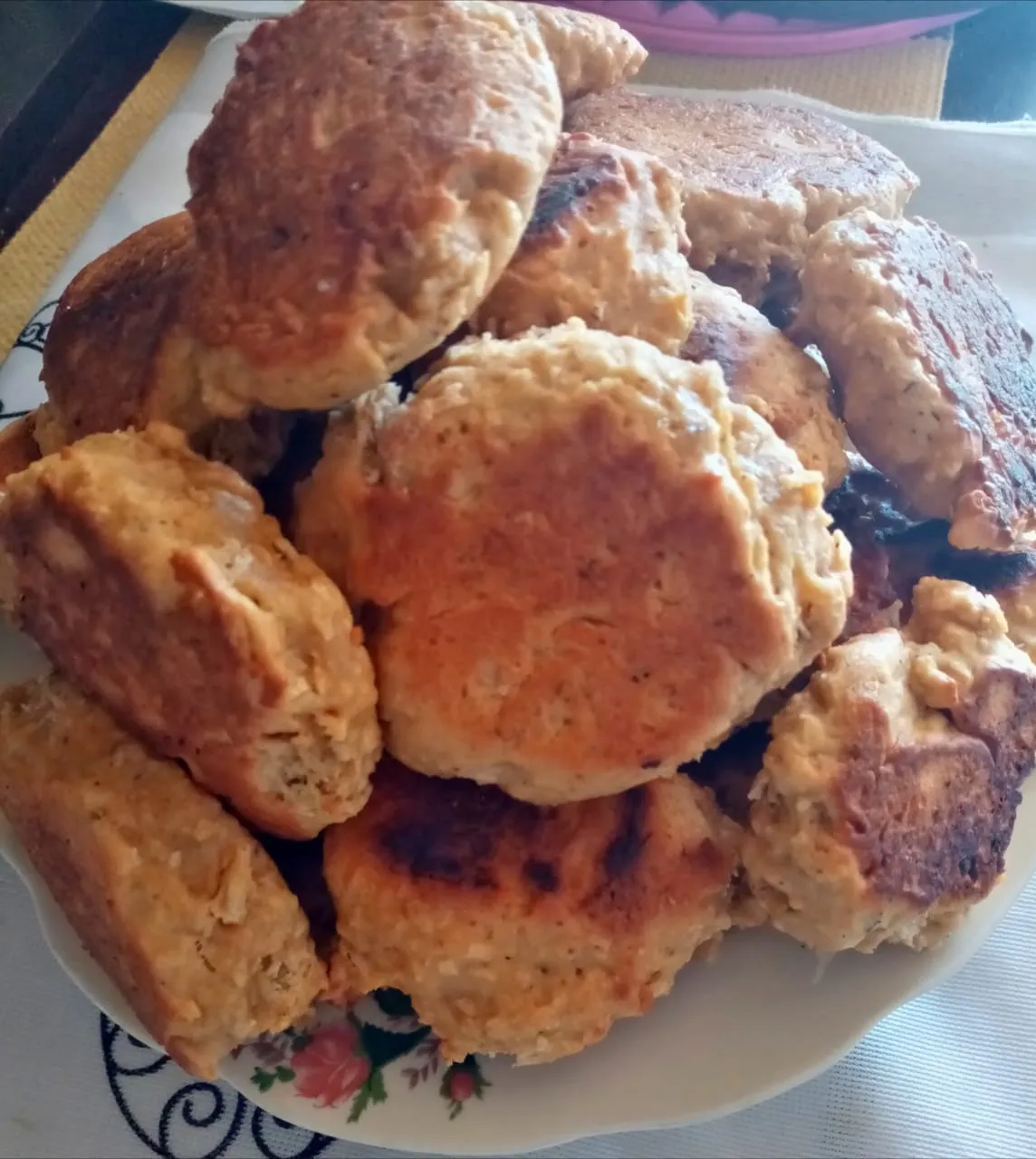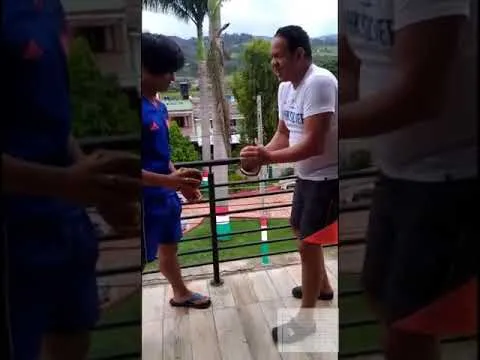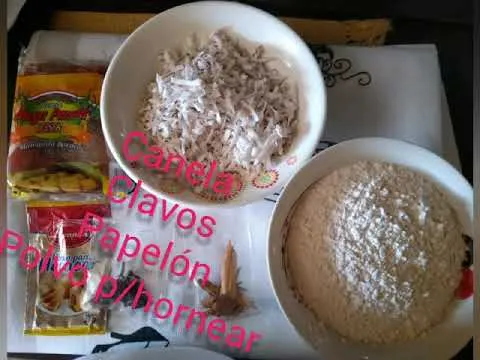
Son un postre ancestral venezolano, probablemente de la época de la colonia, a finales de 1700.
Derivan de los postres europeos, traídos por las monjas de los conventos,que guardaban con celo sus recetas.
Se dice que se originó en Puerto Rico, donde las esclavas sustituyeron la manteca de cochino (cerdo), por el coco. Lo endulzaban con miel.
De estas tierras, llegaría a las nuestras, donde agregaron el papelon y las especias, aunque no son de esta región del mundo.
El papelón o panela, es un subproducto de la caña de azúcar, cuyo melao se coloca en moldes.
Rompiendo coco como en Barlovento<
Hoy les traigo la receta de los besitos de coco.
En las tardes, cuando te provoca un cafecito, también deseas acompañarlo con algun postre sencillo para que ambos te motoricen de nuevo.
Es aquí donde aparecen nuestros protagonistas.
Sé que te gustarán, así que, aquí te envío la receta.
Puedes disfrutar hacerlos con tus hijos en esta cuarentena.
Luego nos cuentas cómo te fue?
<
Ingredientes
Harina de trigo leudante.
Coco rayado.
Papelón.
Canela.
"Clavitos"
Coloca el papelón a hervir en agua para que se disuelva. Agrégale los clavos y la canela. Deja enfriar.
Cuela para retirar los clavos y la canela.
Está solución de papelón se la agregas al coco rayado.
Ahora, debes tamizar la harina para evitar los grumos. Hazlo directamente sobre la solución poco a poco y mezcla con paleta.
¡Excelente, ya tienes la masa!
Puedes llevar al horno en bandeja engrasada.
Yo lo hice en un par de calderos para probar que también se puede sin horno.
En ese caso, debes engrasar los calderos.
Con una cuchara o paleta engrasada, toma porciones pequeñas de masa.
Con ayuda de otra cucharilla, colócala en tus calderos.
Mantenlos tapados, a fuego lento.
Voltear a los 10 minutos, y deja ese mismo tiempo por ese lado.
¡Listo, ya tienes besitos de coco!
Déjalos enfriar y acompaña tu cafecito vespertino.
Los niños disfrutarán hacerlos y comerlos
Gracias a @hive, @bluemist, @enmy, @danielvehe, @leticiapeteira.
♥️-------------💖------------♥️
English versión
They are an ancestral Venezuelan dessert, probably from the colonial era, in the late 1700s.
They derive from European desserts, brought by the nuns from the convents, who zealously kept their recipes.
It is said to have originated in Puerto Rico, where slaves replaced lard (pig) with coconut. They sweetened it with honey.
From these lands, it would reach ours, where they added the wallpaper and spices, although they are not from this region of the world.
Papelón or panela is a by-product of sugar cane, whose melao is placed in molds.
Breaking coconut as in Barlovento < > **
Today I bring you the recipe for coconut kisses.
In the afternoons, when he gives you a cup of coffee, you also want to accompany him with a simple dessert so that both will motorize you again.
It is here where our protagonists appear.
I know you will like them, so here I send you the recipe.
You can enjoy doing them with your children in this quarantine.
Then you tell us how it went?
Ingredients
Raising wheat flour.
Coconut lined.
Papelón.
Cinnamon.
"Clavitos"
Place the paper to boil in water so that it dissolves.
Add the cloves and cinnamon.
Let it cool. Strain to remove the cloves and cinnamon.
You add this solution to the striped coconut.
Now, you should sift the flour to avoid lumps.
Do it directly on the solution little by little and mix with a palette.
Excellent, you already have the dough!
You can take it to the oven in a greased tray.
I did it in a couple of cauldrons to prove that you can also without an oven.
In that case, you should grease the cauldrons. With a greased spoon or popsicle, take small portions of dough.
With the help of another teaspoon, place it in your cauldrons.
Keep them covered, over low heat.
Turn after 10 minutes, and leave that same time on that side.
Done, you already have coconut kisses!
Let them cool and accompany your afternoon coffee. Children will enjoy making and eating them.
Thanks to @hive, @bluemist, @enmy, @danielvehe, @leticiapeteira. Edition: Ayarit Diaz Video: Ayarit Diaz Photographs: Ayarit Diaz @netdent
Edición: Ayarit Diaz
Video: Ayarit Diaz
Fotografías: Ayarit Diaz

